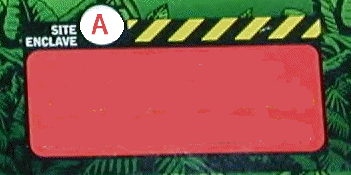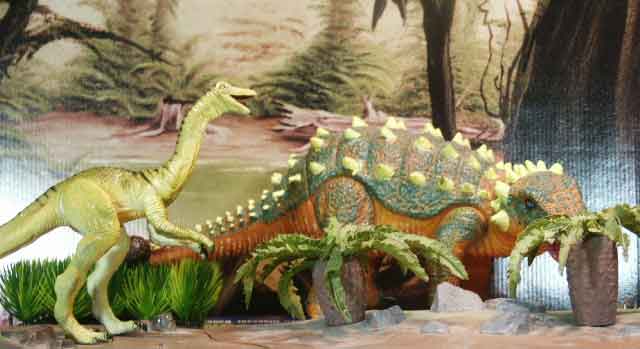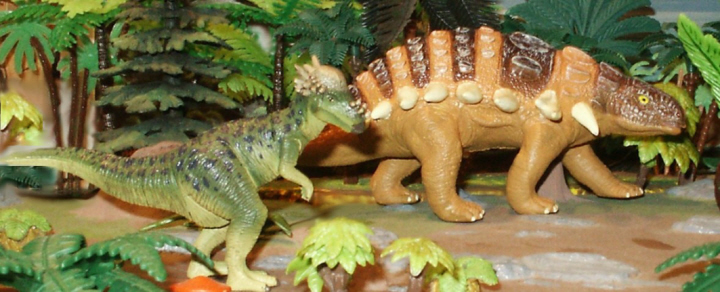Late Cretaceous
Edmontonian
Horseshoe Canyon Formation
73 to 70 Ma the sea level periocially rose and fell exposing land that had previously been underwater throughout Horseshoe Canyon times before finally receding altogether in the years after. Due to the changing sea levels, many different environments are represented in the Horseshoe Canyon Formation Alberta Canada, including offshore and near-shore marine habitats and coastal habitats like lagoons, estuaries and tidal flats with peat swamps. The area is crossed rivers and deltas. Hadrosaurs, which make up half of all dinosaurs known, including the genera Edmontosaurus, Saurolophus and Hypacrosaurus. Ceratopsians and ornithomimids were also very common, together making up another third of the known fauna. Armored ankylosaurs are much rarer. All the known fossils of Albertosaurus sarcophagus are from Horseshoe Canyon. It is the apex predator. The small predators are troodontids, dromaeosaurids. ver092714
The horned dinosaurs are best know from the lower Horseshoe canyon formation. Coastal areas were characterized by Pachyrhinosaurus and Edmontosaurus. Edmontonia was one of the largest nodosaurids. It had no spines on its sides but bands of bony plates across its back and tail with small bony studs between the bands. Plates jutted up over its shoulder and back, and it may have had floating armor in the skin, or a horny sheath. Unlike most ankylosaurs it had a light skull with looped air passages to warm air before it reached the lungs, and bony shutters to protect the eyes. It had small, ridged bony plates on its back and head and many sharp spikes along its back and tail. The four largest spikes jutted out from the shoulders on each side, two of which were split into subspines in some specimens.





